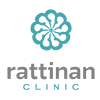Buccal fat removal is a popular cosmetic surgery designed to create a slimmer, more contoured face by removing excess fat from the cheeks.
At Rattinan Clinic, we specialize in precision facial contouring, and this blog will walk you through everything you need to know about the procedure—from surgery details to post-operative care and recovery tips.
Buccal fat removal is a minimally invasive cosmetic procedure that involves removing the buccal fat pads—a deep fat layer in the lower cheek area. These fat pads can make your face appear rounder or fuller, and their removal helps enhance cheek definition and create a V-shaped facial profile.
The procedure is performed through the inside of the mouth, leaving no visible scars.
Surgery Overview
Hospital Admission
Buccal fat removal is an outpatient procedure. No hospital stay is required.
Duration of Surgery
The surgery typically takes about 30 to 60 minutes.
Type of Anaesthesia
Most patients receive local anaesthesia with or without sedation. In some cases, general anaesthesia may be used.
Pre-operative Instructions
To prepare for buccal fat removal surgery:
- Avoid aspirin, anti-inflammatory drugs, and supplements that can increase bleeding for at least 7 days before surgery.
- Refrain from smoking and drinking alcohol as these can delay healing.
- Maintain excellent oral hygiene to minimize the risk of infection.
Post-operative Care Instructions
1. Wound Care and Hygiene
- Rinse your mouth frequently using an antiseptic mouthwash.
- Brush teeth gently during the first week to avoid irritating the surgical site.
2. Swelling and Pain Management
- Apply cold compresses on both cheeks for the first 3 days to reduce swelling and discomfort.
- Sleep with your head elevated at a 30-degree angle to reduce swelling.
3. Activity and Physical Health
- Avoid any facial trauma or heavy impact sports for 3–4 weeks.
- Wait at least 1 month before resuming exercise or strenuous activities.
4. Diet Recommendations
- Stick to soft or liquid foods for the first 3 days after surgery.
- Avoid spicy, sour, hard, or crunchy foods, alcohol, and smoking for at least 7 days post-op to prevent irritation and infection.
5. Suture Information
- The sutures used are self-dissolving and do not need to be removed.
Expected Results After Buccal Fat Removal
Patients typically notice visible results within 4 to 6 weeks, with full contouring effects becoming apparent by 3 to 6 months. The slimming effect is permanent, as the buccal fat pad does not grow back.
Risks and Complications
While buccal fat removal is generally safe, potential risks include:
- Infection or delayed wound healing
- Prolonged swelling or bruising
- Nerve injury (rare)
- Facial asymmetry
- The need for revision surgery in rare cases
It’s crucial to follow all aftercare instructions and report any unusual symptoms such as excessive swelling, redness, or fever.
Related Facial Contouring Procedures
For enhanced results, buccal fat removal is often combined with other cosmetic procedures such as:
- Chin liposuction
- Botox jaw reduction
- Cheek fillers or implants
- Facial liposuction or facelift
Final Thoughts
Buccal fat removal is a safe and effective procedure for individuals looking to achieve a more sculpted, defined facial appearance. By following the proper post-operative care instructions, patients can ensure a smooth recovery and optimal results.
At Rattinan Clinic, our experienced surgeons provide personalized care from consultation to recovery. If you’re considering buccal fat removal or have questions about facial contouring, contact us today to schedule your consultation.


Our Expert Medical Contributors are licensed doctors and specialists who ensure every article is accurate, trustworthy, and easy to understand. Guided by our commitment to safety, care, and confidence, they provide expert insights to help patients make informed decisions. At Rattinan, we believe that knowledge is the first step to transformation.